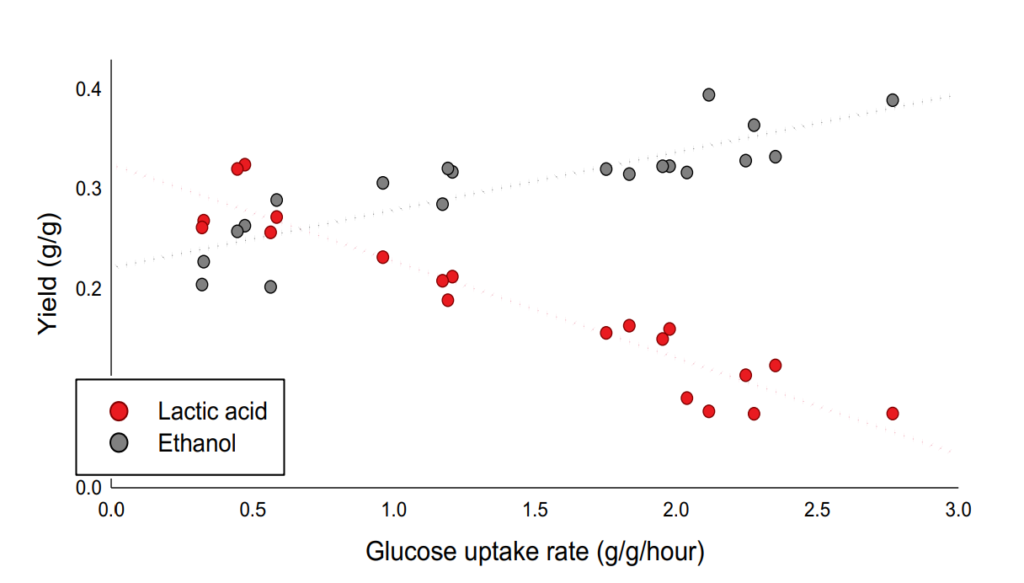Glucose Assimilation Rate Determines the Partition of Flux at Pyruvate Between Lactic Acid and Ethanol in Saccharomyces cerevisiae
Themes: Conversion
Keywords: Metabolomics, Transcriptomics
Citation
Lane, S., Turner, T.L., Jin, Y.S. Feb. 1, 2023. “Glucose Assimilation Rate Determines the Partition of Flux at Pyruvate between Lactic Acid and Ethanol in Saccharomyces cerevisiae.” Biotechnology Journal. DOI: 10.1002/biot.202200535.
Overview

Engineered Saccharomyces cerevisiae expressing a lactic acid dehydrogenase can metabolize pyruvate into lactic acid. However, three pyruvate decarboxylase (PDC) isozymes drive most carbon flux toward ethanol rather than lactic acid. Deletion of endogenous PDCs will eliminate ethanol production, but the resulting strain suffers from C2 auxotrophy and struggles to complete a fermentation. Engineered yeast assimilating xylose or cellobiose produce lactic acid rather than ethanol as a major product without the deletion of any PDC genes. We report here that sugar flux, but not sensing, contributes to the partition of flux at the pyruvate branch point in S. cerevisiae expressing the Rhizopus oryzae lactic acid dehydrogenase (LdhA). While the membrane glucose sensors Snf3 and Rgt2 did not play any direct role in the option of predominant product, the sugar assimilation rate was strongly correlated to the partition of flux at pyruvate: fast sugar assimilation favors ethanol production while slow sugar assimilation favors lactic acid. Applying this knowledge, we created an engineered yeast capable of simultaneously converting glucose and xylose into lactic acid, increasing lactic acid production to approximately 17 g L−1 from the 12 g L−1 observed during sequential consumption of sugars. This work elucidates the carbon source-dependent effects on product selection in engineered yeast.
Data
- Strains
- Yields
- Plasmids
- Glycolytic Flux
- Key Gene Expression